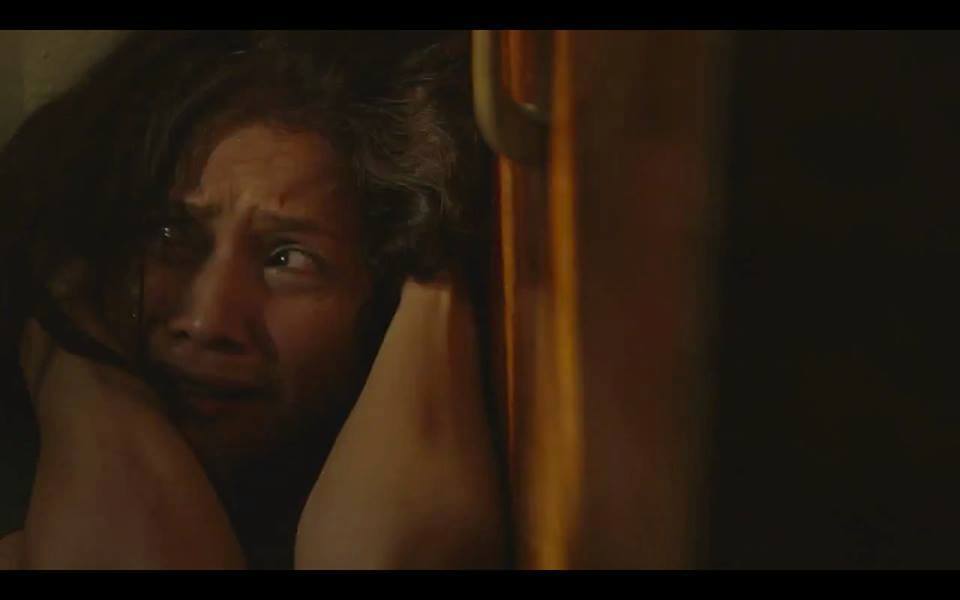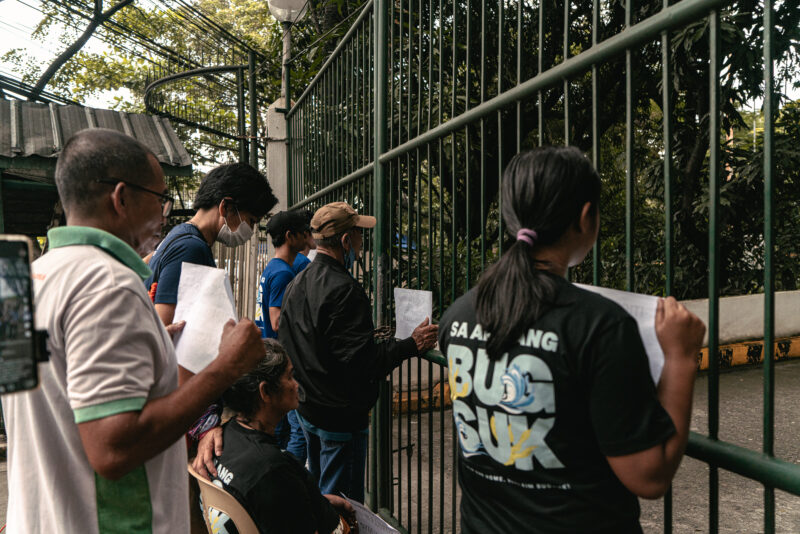Movies like Mga Anino ng Kahapon are changing the face of mental illness on the Philippine silver screen.
Irene screams while curled into a fetal position under her bed. The loud footsteps sound too close—she feels as if her ears will burst. Before long, the military operatives will take their family away. Nobody can pacify her, not even her husband, who has tried explaining to her that it’s all in her head.
Irene has schizophrenia. This is a scene from Mga Anino ng Kahapon, a film written and directed by Dr. Alvin Yapan, chair of the Filipino Department. But Irene isn’t just a fictional character.
One in every 100 Filipinos has schizophrenia. However, most individuals go undiagnosed, made to face the realities of mental disorders without the necessary psychiatric measures or the acceptance of others.
In general, Philippine media rarely focuses on characters with mental disorders. When it does, there’s stigma surround the issue, putting awareness even further beyond reach. But some Filipinos, such as the producers of Mga Anino ng Kahapon, want to reverse this situation.
Faces of instability
The media tends to reflect and encourage the ignominy and misconceptions that plague mental disorders; its characterization 0f the mentally ill reveals a generally negative regard for them.
Those with disorders are often depicted as tragic figures who are unable to function properly in society. A famous example is Sisa, the unfortunate but selfless mother from Jose Rizal’s Noli Me Tángere who cared for her family until she had nothing more to give. After losing her two sons, she began her descent from reality, becoming the laughingstock of the barrio.
On the other hand, there are instances in foreign media where mental illness is glamorized. A popular example is Fight Club, the Chuck Palahniuk novel later adapted into the film of the same name. Here, the book’s narrator has dissociative identity disorder, or as it’s more commonly known, multiple personality disorder. His alter ego, Tyler Durden, is portrayed as a confident, street smart individual who is the instigator behind the infamous Fight Club.
When this is the sort of portrait the media paints of the mentally ill, it may also make the prospect of being one of them attractive. As Anna*, an Atenean student diagnosed with bipolar disorder, discovered, there are people who romanticize mental conditions like hers. “A friend told me once he wanted to have bipolar disorder,” she shares.
Mga Anino ng Kahapon is a Philippine counterexample to these norms. In the film, Irene is a mother and nurse who develops schizophrenia after her husband leaves the country for work. She imagines that military operatives are stalking her family and she engages in conversations with imaginary people. To everyone’s distress, Irene’s mind repeatedly places her greatest fears right before her.
Matters intensify as she and her family struggle to deal with her disorder. In one scene, Irene falls before the operatives she sees near the bushes, yelling at her son to run to safety. The young boy is in tears, frozen by the sight of his mother breaking down.
These facets of dealing with mental disorders are often overlooked by society, and stigma keeps many from openly discussing the topic. “Mental illness isn’t talked about so much,” says Gay Domingo, the film’s associate producer. “We feel anxious about matters that we don’t know much about.”
Putting the damage on
Mga Anino ng Kahapon was made with the intention of correcting misnomers of mental disorders. In a country where having schizophrenia often means being labeled baliw (crazy) or sinapian (one possessed by demons), there are many structures that work against achieving genuine understanding.
The negative connotations are reflected even in today’s rhetoric. If a friend does something incorrectly, they may be called “retarded.” If a friend experiences mood swings, somebody could call them “bipolar.”
But these definitions are greatly reductive. Anna says, “Mania to me [is] not sleeping for thirty six hours because of so much energy, or spending a hundred grand [in] one go. Depression usually comes with suicidal thoughts and locking myself in my room.”
A skewed image of mental disorders is compounded by the Filipino bias towards the spiritual. In Mga Anino ng Kahapon, Irene’s family was alarmed by her hallucinations, erratic behavior and delusions, so they did what many a Filipino family would do: Send her to a witch doctor.
The first reaction is very superstitious Baka nasapian lang, ipapa-albularyo.
“The first reaction is very superstitious,” says Yapan. “Baka nasapian lang, ipapa-albularyo (They may have simply been possessed, so they get sent to a witch doctor).”
An elusive cure
Adding insult to injury, there is also genuine doubt from some national institutions as to the legitimacy of mental disorders.
Before filming Mga Anino ng Kahapon, members of the cast and crew visited the National Center for Medical Health in Mandaluyong, where they were exposed to the grim realities of the public health sector.
“Parang talaga silang mga baboy. Yung hubad, hino-hose na lang para mapaliguan. Parang preso (They were treated like pigs. They were naked and simply hosed down when they need to be bathed. It was like a prison),” says Yapan. Though the administration wants to improve their facilities, there simply aren’t enough funds to do so.
Ateneo Special Education Society President Joni Aquino also notes how the need for mental healthcare has generally been downplayed. “Autism, for example, isn’t covered by PhilHealth because it’s classified as [a] vanity illness, an illness ‘that only [rich] people have,’” she says, adding that, “In special education, the budget also isn’t huge.”
Dr. Weevens Ty, a part-time lecturer of the Psychology Department, thinks that insurance coverage is a first step towards the progress of the affected families. “I think it is an effective means by which treatment and care can be extended to the masses,” he says.
But since schizophrenia is a lifelong disorder, PhilHealth may be reluctant to cover the expensive regular medication needed to manage it. But as Yapan discovered when working with clinical psychologists while researching for his film, the situation may not be as hopeless as it seems.
“Mental illness is just like any other lifelong illness, like diabetes [or] high blood pressure,” says Yapan. With the proper treatment and maintenance, individuals with mental disorders are presented with the opportunity to function in society with markedly less difficulty.
Mind over matter
Though Mga Anino ng Kahapon has much to reveal, the chances that the film will receive wide release anytime soon are slim. Domingo acknowledges, “I think it would take a lot to convince a moviegoer to dress up, go out of his home, travel to the mall and shell out about P200 to watch a film about a nurse with schizophrenia and her family.”
Given the name-calling, deficiency of medical coverage and overall lack of understanding, this country is a long way from becoming a community that does not demean persons with mental disorders. “Worldwide, [mental health is] gaining a critical mass [of people concerned about it],” says Yapan. “In the country, we have to work on it.”
It is important to gain information to clear out the misconceptions. “It will take the concerted, well-meaning effort from various sectors of society to lessen the stigma,” says Ty. It’s efforts like Mga Anino ng Kahapon that can get us going in the right direction.
Individuals with schizophrenia feel trapped by their own minds. Similarly, it can be just as easy to be held in place by misconceptions.
That said, a change of perspective is in order, even if being optimistic about the mental healthcare situation in the Philippines seems naïve. Call us crazy, but for the sake of those who struggle within their own minds each day, it seems as if a supportive environment can make all the difference.
*Editor’s note: Name has been changed to protect the interviewee.







